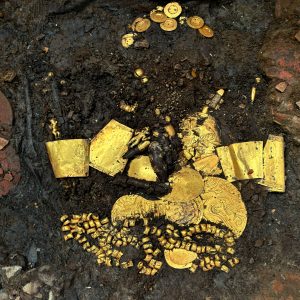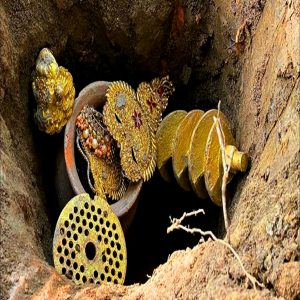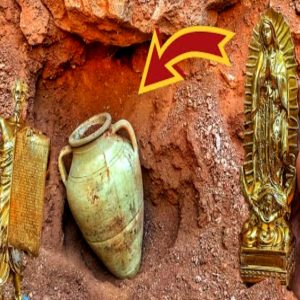Archaeologists have made a remarkable discovery during excavations at an ancient cemetery in Poland. The researchers uncovered 160 artifacts dating back to the Neolithic period and early Bronze Age. The cemetery itself, which spans from the late pre-Roman to early Roman period (approximately the 1st century BC to the 2nd century AD), was also unearthed. 23 inhumation burials – where full bodies were buried in the ground – alongside four cremation burials, were a included at the cemetery.
Over the course of three excavation seasons, archaeologists from the Jagiellonian University’s Institute of Archaeology and the company Pryncypat made these finds, in the town of Kazimierza Wielka, located about 28 miles (44 km) northeast of Kraków, reports a Jagiellonian University Facebook post.

A selection of the findings from the cemetery in Poland. (Institute of Archaeology, Jagiellonian University, Cracow)
Cremation Burial: Burnt Remains
One cremation burial, discovered mid-August this year, proved particularly fascinating, as the burnt human remains had been placed in a bronze vessel of Roman origin. This bucket-shaped vessel, known as a situla, was used as an urn for human remains burned on a funeral pyre, according to Joanna Zagórska-Telega, one of the excavation leaders from the Jagiellonian University.
“The situla has survived almost intact, with elaborately cast dolphin-shaped handle attachments…Three legs in the shape of stylized dolphins have also survived at the base,” Zagórska-Telega was quoted by Newsweek.

Left, Joanna Zagórska-Telega holding the freshly excavated intact Roman bronze vessel that held cremated remains. Right, the vessel. (Left; Michał Podsiadło, Right; Jakub Śliwa/Jagiellonian University)
While the exact age of this specific vessel is still being determined, similar artifacts found in the region have been dated to the 1st century BC and the 1st century AD. Such finds are extremely rare in Poland.
The origins of these bronze vessels are still debated among scholars, though it is widely believed they were crafted in workshops located in northern Italy or the eastern Alps. Early bronze vessels, including situlae with dolphin-shaped attachments, made their way into Barbaricum (the area north of the Roman frontier, which includes modern-day Poland) mainly through trade.
Before conservation efforts begin, the vessel will undergo analysis to determine its method of construction. Researchers will also study the burnt human bones inside to ascertain the age and sex of the deceased.

One of the Przeworsk culture burials. (Michał Podsiadło/Jagiellonian University)
A Male Warrior: Przeworsk Culture
Based on the evidence, Zagórska-Telega suggests the individual may have been a male warrior. This theory is supported by the discovery of iron weapons, including a sword, spearheads, and shield fittings, found near the urn. These items were deliberately bent and burned on the funeral pyre, a common ritual practice in this context. The weapons’ style indicates the burial likely dates back to the 1st century BC.
Zagórska-Telega explains:
“Several dozen vessels, or fragments of vessels, of this type are known from all over Europe, but only a handful of them have been completely preserved in as good a condition as the situla from Kazimiera Wielka. Most of them were discovered by chance in the 19th and early 20th centuries, and only a few were found during regular excavations by archaeologists, i.e. in circumstances that allowed the entire context of the find to be studied. This is why the Kazimiera Wielka find is of such scientific importance.”
Such customs were prevalent among the Przeworsk culture, which thrived in central and southern Poland between the 3rd century BC and the mid-5th century AD. In fact, the custom of ritually destroying weapons and burying them with deceased warriors is typical of the peoples inhabiting the European Barbaricum during the last centuries BC and the early centuries AD.
It is believed that the Przeworsk culture, which practiced this custom, was linked to the Lugii and the Vandals, as mentioned in ancient sources, and its reach extended into parts of Slovakia and Ukraine. In the final centuries BC, the Przeworsk culture was significantly influenced by the Celts, who dominated much of central Europe at the time, reports Notes from Poland. Scholars suggest that it was likely through this Celtic influence that the situla discovered in Kazimierza Wielka found its way to the region occupied by the Przeworsk culture.





